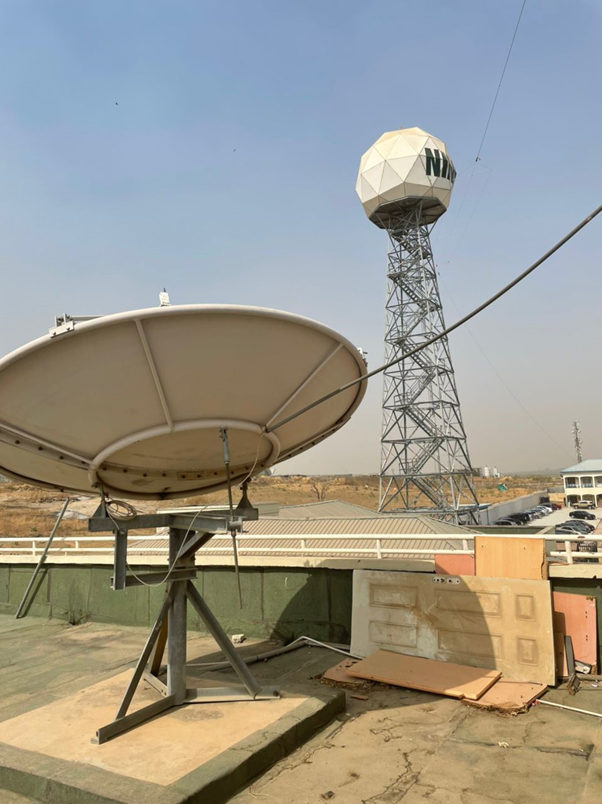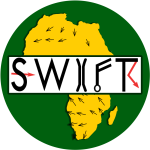GCRF African SWIFT has facilitated the introduction of innovative forecasting techniques into operational forecast centres in Africa. The project has built the capacity of personnel in both research and operational organisations and has strengthened links between organisations, allowing African centres to develop and implement products themselves. The project has worked on developing forecasts on a range of timescales, including the important sub-seasonal (2-4 week) and nowcasting (0-6 hours) timescales, where significant improvements have been made.
Practical, economic and societal impact/ anticipated impact

More accurate forecasts have the potential to improve lives in Africa through a range of sectors such as agriculture, energy storage and disaster management. SWIFT partners produce a range of different types of forecasts across Africa, many of which have improved due to SWIFT innovation.
SWIFT has worked with 6 operational organisations that produce weather forecasts. These can be divided into two categories:
- World Meteorological designated Regional Climate Centres: ACMAD (the African Centre for Meteorological Applications for Development) and ICPAC (the Intergovernmental Authority on Development (IGAD) Climate Prediction and Applications Centre);
- National meteorological and hydrological services in four countries: the Agence Nationale de l’Aviation Civile et de la Météorologie (ANACIM), Senegal; the Ghana Meteorological Agency (GMet); the Kenya Meteorological Department (KMD) and the Nigerian Meteorological Agency (NiMet).
All of these organisations have already begun using forecast products based on SWIFT work. SWIFT has worked on products for a range of forecast timescales, so has enabled operational forecasters to improve forecasts for a range of applications.
New services making use of sub-seasonal to seasonal prediction
SWIFT has carried out scientific research and coordinated forecast development for sub-seasonal to seasonal (4-6 week) forecasts. This has led to improvements in four of the partner organisations.
ICPAC has been able to greatly increase the detail of their forecasts, allowing users to better prepare for upcoming months by considering more information and planning for individual weeks. Using sub-seasonal to seasonal forecast products developed with SWIFT, ICPAC now offers forecasts on monthly timescales, predicting for each week: soil moisture, probability of rainfall exceeding a certain amount, total precipitation, precipitation anomalies, and maximum and minimum temperatures. Previously, forecasts only gave predictions for precipitation and temperature for whole months.
In NiMet, the sub-seasonal to seasonal forecast work carried out by SWIFT has improved operational forecasts for a range of sectors, such as agriculture, aviation, health, insurance, water resources and management, construction, natural disasters and humanitarian sectors. Anomalies and thresholds for values are now available for these forecasts, increasing their practicality. NiMet have used the sub-seasonal to seasonal developments to create forecasts designed specifically for individual groups. Through SWIFT the service has produced forecasts tailored to the agriculture sector which were widely disseminated through CASP (the Climate Change Adaptation and Agribusiness Support Programme). CASP was a collaboration between NiMet and the Nigerian government which worked to deliver these effective, specialised forecasts to 663 village areas and approximately 104 local governments across seven states, reaching an average of 56,000 farmers annually.
Sub-seasonal to seasonal forecasts are also being used operationally in KMD and ACMAD for applications such as meningitis risk maps, transport, food distribution, energy and environment services.

Introducing nowcasting to tropical Africa
SWIFT has greatly advanced nowcasting (0-6 hour forecasting) in the whole of Africa. Before SWIFT, most countries in Africa used only immediate satellite information with no forward extrapolation to make predictions for the coming hours. Most countries also lacked any systems to observe the current rainfall patterns accurately. Advanced 0-6 hour forecasting was only available in South Africa and Tanzania, where there had been consistent investment in radars. SWIFT has carried out work on satellite-based nowcasting products, which have been installed in all the operational centres partnered with SWIFT excluding ICPAC, which does not give short-term forecasts. The product is being used operationally in four of the partner weather forecasting organisations – KMD, NiMet and ANACIM – while GMet, who have been the first operational partner to install the system locally in Africa, are planning to use it for aviation forecasting at the airport in Accra.
Nowcasting is vital in producing warnings for extreme weather. At KMD, SWIFT nowcasting products are used to create daily weather reports and warnings which are sent on to seven other countries in East Africa, as well as daily reports for Lake Victoria. On Lake Victoria fishing communities are very sensitive to weather conditions, which represent a fatal hazard to small boats and can interfere with the drying of fish onshore. Approximately 1000 fishers die from dangerous conditions on the lake each year, so improved forecasts in the region have great potential to save lives. The nowcasting products are also used in Kenya for disaster management: they were used to improve the efficiency of the response to the locust swarms in 2020 and to give early warnings for floods in 2019.
Nowcasting products are also being used operationally at NiMet, GMet and ANACIM. NiMet are currently working on a ‘microburst’ algorithm for aviation to identify and predict severe local wind events which can be intense enough to cause fatal airline accidents.
Based on the nowcasting developments from SWIFT, an app has been developed to disseminate forecasts in Africa, and has been launched for trials in Kenya. Forecasting African Storms Application (FASTA) is now available for free to download in Kenya, and gives real time information on storms which can be used publicly.
Nowcasting can also be used to evaluate forecasts, which has had positive results in Kenya and Senegal. Satellite nowcasting data is used to give measures of accuracy for forecasts on all timescales, which was not previously possible. At KMD, forecasts are now offered to users with percentage ‘accuracy rates’. This has increased trust in forecasts from KMD, so authorities are more likely to respond to predictions for extreme weather and are more likely to use KMD forecasts in important operations (the reliability was noted in the response to the 2020 locust swarms, for example).
Exploiting the new generation of weather prediction models
SWIFT has worked to bring new meteorological models into operational work. In Kenya, the new generation of “convection-permitting models”, which resolve severe weather on scales down to a few kilometres, are now in use to improve the quality of forecasts. In particular, through the training and forecasting evaluation carried out in SWIFT, African forecasting centres are now making good use of the fine resolution and improved accuracy of the UK Met Office’s convection-permitting “Tropical Africa” model. This model enables forecasters to provide information on the fine scales which matter most to their clients – such as the scale of a city or a farming region. As KMD also produces forecasts for other countries in East Africa such as Rwanda, Ethiopia, Somalia and Burundi, other countries are seeing benefit from the models and forecasters outside of Kenya are being exposed to their use.
In both East and West Africa, automated “synoptic” weather charts developed during SWIFT have sped up forecast production, and enabled forecasters to get an enhanced “situational awareness” of the prevailing large-scale weather patterns. By synthesising a large volume of computational data into a small number of specialist weather maps, the automated charts also help forecasters to use the results of computer forecast models to predict where and when severe rainfall may develop. For example, NiMet used these plotting methods to investigate aspects of atmospheric dynamics that were previously not considered. NiMet are also integrating this kind of weather analysis into their ongoing training programmes and continual professional development for forecasters. The charts have also made nowcasting more seamless, bridging the gap between forecasts on 0-6 hour timescales and daily forecasts, because the new daily forecasting charts have become the starting point for the nowcasting process, giving an overview of the general large-scale weather situation and its daily forecast.
Benefits of international and collaborative working
Through working internationally, SWIFT has been able to modify and create Standard Operating Procedures (SOPs) for the delivery of forecast products that have been developed throughout the project on the full range of timescales from nowcasting to sub-seasonal-to-seasonal. These SOPs were created by adapting and learning from the existing versions which are in use in some countries in Africa (e.g. at KMD), and will serve as a template for individual weather services to develop and improve their own procedures in future. The development of SOPs offers a common framework for future collaborations across Africa on forecast development, offering benchmarks which are similar between countries. SWIFT products are now included in SOPs at KMD, ACMAD and NiMet.
In some cases, there are barriers to SWIFT products being used operationally that could easily be overcome. Difficulties with data sharing and technical access to data still cause problems.
SWIFT has made improvements to operational forecasts in a range of services and on a range of timescales from hourly to seasonal. In particular, the project has advanced scientific research and brought this into operational use through sub-seasonal to seasonal forecasts, nowcasting, and new models. The work to improve the quality and skill of these forecasts has been conducted alongside new efforts and training in the process of co-production of services with clients. In this way the improvements in forecasts can, and already have been, used in many applications such as new early warning systems and new services to commercial clients.
Authors
Martin Parker, SWIFT Project Office
Kamoru Abiodun Lawal, NiMet, ACMAD & ACDI, UCT (African Climate and Development Initiative, University of Cape Town)
Eniola Olaniyan, NiMet
Masilin Gudoshava, ICPAC
Herbert Misiani, ICPAC
Samuel Owusu Ansah, GMet
Joshua Asamoah, GMet
Bernard Chanzu, Jemimah Gacheru, David Koros, KMD
